THE FIDUCIARY ACTIONABLE KNOWLEDGE IN THIS POST MAY CONTAIN AFFILIATE LINKS. WE GET A COMMISSION, AT NO COST TO YOU, IF YOU DECIDE TO CLICK THROUGH CERTAIN LINKS. WE ONLY RECOMMEND PRODUCTS OR ORGANIZATIONS THAT WE BELIEVE WILL PROVIDE YOU WITH REAL RESULTS. THE INFOMATION IN THIS POST MAY HAVE BE DERIVED FROM THE SOURCES FOUND IN THE 'WORKS CITED' SECTION AT THE BOTTOM OF THE PAGE. PLEASE READ OUR DISCLOSURE PAGE FOR MORE INFO.
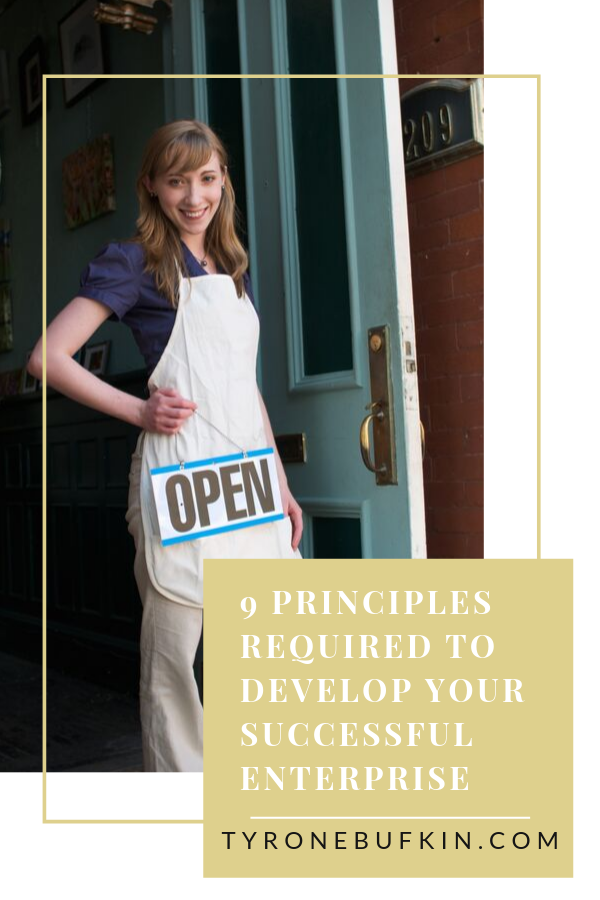
Are you starting, growing or fixing a business? Are you interested in designing tommorow's enterprises? Are you craving the chance to create value in the marketplace? Then the Business Model Generation by Osterwalder & Pigneur is a must read. Here is my takeaway from the Canvas section and my mind is already blown. If you need to get to your customers faster and better than your competitor, then you will want to continue reading.
Related Post: Apply This Proven Affiliate Marketing Strategy Course Today!
The Business Model Canvas is for you
A business model describes the rationale of how an organization creates, delivers, and captures value. The challenge is that the concept must be simple to understand by every one who is or will be involved in the organization. The best part about the Business Model Canvas is that it can be used for anyone including career prospects, executives, consultants, advisors, investors, entrepreneurs, or leaders of organizations and can be explained in very simple terms. It is best for entrepreneaurs looking to systematically understand, design, and implement a new business model or analyze and renovate an old one. It is simple to learn, easy to tweak, and motivates you to take actioin with your newly organized information. If you are ready to abandon outmoded thinking and embrace new, innovative models of value creation, lets get started.
"As a startup coach I support teams to create new products and design their businesses. The Business Model Canvas does a great job assisting me to remind the teams to think holistically about their business and prevents them from getting stuck on details. This helps to make their new venture a success." - Christian Schuller
You are only 3 steps away from your powerful new business model
- You will want to plot your canvas somewhere with a lot of space so that your whole team can collaborate; even if you are a team of one. Such as a big poster board or dry erase board. You can download a Canvas at Strategyzer's website.
- The Business Model Canvas is made up of 9 building blocks; Customer Segments, Value Proposition, Channels, Customer Relationships, Revenue Streams, Key Resources, Key Activities, Key Partnerships, and Cost Structure.
- Sketch out your business model.
- Customer Segments - Who are you creating value for?
- Value Propositions - What problem are you helping to solve or need are you satisfying for each customer segment?
- Channels - How will you deliver your value propositions to each customer segment?
- Customer Relationships - What type of relationship will you establish and maintain with your customers?
- Revenue Streams - How much cash is generated from each customer segment? How to influence the value customers are willing to pay to offset the cost and create positive cash flow?
- Key Resources - What resources are most important to make the business model work?
- Key Activities - What are the most important activities required to operate the business model?
- Key Partnerships - Who are the suppliers and partners needed for a successful business model? Which resources will you need to acquire from them?
- Cost Structure - What are all the costs incurred to operate your business model?
Let's take a deeper look at each building block
- Customer Segments - A company may group customers with common needs, behavior, and other attributes into separate segments if their needs require and justify a distinct offer, they are reached through different distribution channels, they require different types of relationships, they have substantially different profitability, or they are willing to pay for different aspects of the offer.
- Mass Market Customer Segment - The value propositions, distribution channels, and customer relationships all focus on one large group of customers with broadly similar needs and problems.
- Niche Market - The Value Propositions, Distribution Channels, and Customer Relationships are all tailored to the specific requirements of a specific, specialized customer segment.
- Segmented - The VP, DC, and CR serves different customer segments that are similar but have varying needs and problems.
- Diversified - An organization serves two unrelated customer segments with very different needs and problems.
- Multi-sided Platforms / Markets - An organization that serves two or more interdependent customer segments wherein both segments are required to make the business model work.
- Value Propositions - VP solves a problem or satisfies a need of a specific customer segment with a selected bundle of quantitative or qualitative products or services.
- Newness Element - A VP that satisfies an entirely new set of needs that the customer segment previously didn't perceive because there was no similar offerings.
- Performance Element -Improving a product or service's performance higher than market norms.
- Customization Element - Tailoring products and services to the specific needs of individual customers or customer segments with mass customization and customer co-creation.
- "Getting the Job Done" Element - Creating value by simply helping a customer get certain jobs done. I.e. Rolls-Royce customers rely entirely on RR to manufacture and service their jet engines.
- Design Element - Developing a product that stands out because of it's unmeasurable but superior design.
- Brand / Status Element - Customers find value in the simple act of using or displaying a specific brand.
- Price Element - Target price-sensitive customers by offering similar value at a lower price, A Value-oriented customer will require more value but will pay a higher price for it. Free offers are starting to permeate various industries.
- Cost Reduction Element - Add value to your customer by helping them reduce total cost when using your product or service. I.e. if they purchase your product they won't have to buy related additional products or services.
- Risk Reduction Element - Creating value by reducing the risk incurred when purchasing your product or service. I.e. One-year service guarantee or 100% cash back guarantee, or 30 day return policy.
- Accessibility Element - Providing customer with access to a product or service that they previously lacked access to.
- Convenience / Usability Element - Creating value but making a product or service easier to use or more convenient.
- Channels - Touch points that play an important role in the customer experience via communication, distribution, and sales channels serv several functions including raising awareness among customers about a company's product or services, helping customers evaluate a company's value proposition, allowing customers to purchase specific products or services, delivering a value proposition to customers, and providing post-purchase customer support. Channels have five distinct phases but each channel can cover some or all of these phases. We can distinguish between direct and indirect channel types as well as owned and partner channel types. Finding the right mix of channels to satisfy your customer is crucial in bringing a value proposition to market.
- Owned channel types can be direct such as in-house sales force or web sales or they can be indirect with retail stores owned and operated by the organization. Owned channels, particularly direct ones, have high margins but can be costly to put in place and to operate. Partner Channel Types are all indirect and span a whole range of options such as wholesale distribution, retail, or partner-owned websites. Partner channels usually have low margins but allow an organization to expand its reach and benefit from partner strengths.
- Channel Phase 1: Awareness - How to get your customer to know about your product or service.
- Channel Phase 2: Evaluation - How to help your customer evaluate your value proposition.
- Channel Phase 3: Purchase - How to allow customers to purchase specific products and services.
- Channel Phase 4: Delivery - How to deliver the value proposition to the customer.
- Channel Phase 5: After Sales - How to provide post-purchase support.
- Owned channel types can be direct such as in-house sales force or web sales or they can be indirect with retail stores owned and operated by the organization. Owned channels, particularly direct ones, have high margins but can be costly to put in place and to operate. Partner Channel Types are all indirect and span a whole range of options such as wholesale distribution, retail, or partner-owned websites. Partner channels usually have low margins but allow an organization to expand its reach and benefit from partner strengths.
- Customer Relationships - The type of relationship established with each customer segment ranging from personal to automated, driven by customer acquisition, customer retention, and boosting sales (Upselling).
-
- Personal Assistance - Based on real human interaction
- Dedicated Personal Assistance - A customer representative provides the deepest and most intimate type of relationship specifically to an individual client over a long period of time.
- Self-Service - Provides all the necessary means for customers to help themselves with no direct relationship.
- Automated Services - simulated personal relationship that is a more sophisticated form of self-service.
- Communities - To be more involved with customers / prospects and facilitate connections between community members.
- Co-creation - engaging with customers to create value for other customers or assist with design of new and innovative products.
- Revenue Streams - The cash generated from each customer segment. Each revenue stream may have fixed menu or dynamic pricing mechanisms but will be either one-time payments or recurring revenues.
- Fixed Menu Pricing Mechanisms - Predefined prices are based on static variables.
- List price - fixed prices for individual products, services, or other Value Propositions.
- Product Feature Dependent - Price depends on the number or quality of the VP features.
- Customer Segments - price depends on the type and characteristic of a customer segment.
- Volume Dependent - Price as a function of the quantity purchased.
- Dynamic Pricing - prices change based on market conditions.
- Negotiation (Bargaining) - depends on negotiation. power &/or skills
- Yield Management - depends on inventory and time of purchase.
- Real-Time Market - depends of supply and demand.
- Auctions - determined by outcome of competitive bidding.
- Asset Sale - most widely understood as selling ownership rights to a physical product for which buyers are free to do whatever they want.
- Usage Fee - generated by the use of a particular service, the more the customer uses the more they pay.
- Subscription Fees - selling access to a service.
- Lending / Renting / Leasing - Granting the temporary and exclusive rights to use a particular asset for a fixed period of time in return for a fee.
- Licensing - giving customers permission to use protected intellectual property in exchange for a fee.
- Brokerage fees - intermediation services performed on behalf of two or more parties.
- Advertising - fees for advertising a particular product, service, or brand.
- Fixed Menu Pricing Mechanisms - Predefined prices are based on static variables.
- Key Resources - The most important physical, financial, intellectual, or human assets, either owned, leased, or acquired from a key partner required to create and offer a value proposition, reach markets, maintain relationships with customer segments, and earn revenues.
- Key Activities - The most important things the company must do to operate successfully.
- Production - designing, making, and delivering a product in substantial quantities and/or superior quality.
- Problem Solving - coming up with new solutions to customer's problems usually through knowledge management and continuous training.
- Platform / Network - managing, servicing, and / or promoting the platform used to deliver the value proposition.
- Key Partnerships - Creating alliances between non-competitors, competitors, joint ventures, or buyer-supplier relationships to optimize the business model, reduce risk, or acquire resources.
- Optimization and economy of scale - optimize the allocation of resources and activities by reducing costs, outsourcing, or sharing infrastructure.
- Reduction of risk and uncertainty - competitive companies may partner in one area and compete in another when it benefits all parties involved.
- Acquisition of particular resources and activities - motived by the need to acquire knowledge, licenses, or access to customers.
- Cost Structures - All costs incurred to operate the business as defined in Key Resources, Key Activities, and key Partnership. Cost structures fall between cost-driven and value-driven extremes. Cost-driven focus' on minimizing costs wherever possible. Value-driven focus' on value creation and less on cost
- Fixed cost remain the same despite the volume of goods or services.
- Variable cost vary with the volume of goods or services produced.
- Economies of sale benefit from lower bulk purchase rates.
- Economies of scope are cost advantages due to a multiuse of services or materials. Use the same distribution channel for multiple products.
Many investors prefer the traditional business plan
The only opposition to the Business Model Canvas that I have found is the traditional business plan but it is actually more complementary than choosing one or the other. To be successful any business needs a business model and a business plan. A business plan will help a business model to happen. Most business plans will require a lot more detail and are obviously much longer. Many Investors would appreciate the Business Model Canvas as a presentation tool to explain the model of your business but would require an traditional business plan to move forward because it is more sufficiently developed and structured for lending.
"The Business Model Canvas has allowed me to establish a common language
and framework with colleagues. I've use the Canvas to explore new growth opportunities, assess uses of new business models by competitors, and to communicate across the organization how we could accelerate technology, market, and business model innovations." -Bruce MacVarish. The more I've researched the Business Model Canvas, the more I discover the multitude of ways people and organizations can benefit from it. I used in on Tyrone Bufkin Enterprises and uncovered that I have three customer segments rather than one. I used to label my customers entrepreneurs but now I know that I serve career-focused entrepreneurs, start-ups, and small businesses. They each deserve different value propositions. I was also able to identify that one of my most crucial key resources and activities is my continued education and thus was better able to justify the purchase of educational seminars, workshops, & material to my investors and partners.
I see the value, how much does it cost?
The Business Model Canvas template is free. All you have to do is download it from the Strategyzer website and become one of 5 million organizations using the Business Model Canvas worldwide. Of course the next step would be to understand how to use it to organize your company. I recommend purchasing the actual book that covers; The Business Model Generation. You can get a sneak peak for free or purchase the book for around $20.00. The next level is using the Strategyzer's online app to design, test, and share business models in real-time. The built in features can guide you through the process and help you uncover things you may not have thought out. These services start only $25 per month. Lastly, you can become an expert on your business with scalable training courses from Strategyzer which include masterclasses, boot camps, and workshops to do hands-on training for you and your entire company. I've bought the books and plan on purchasing the additional services soon so check my blog for future reviews.
"I use the Business Model Canvas to teach early stage entrepreneurs across a wide range of industries as a much better way to translate their business plans into the business processes that they will need to operate their businesses and to ensure that they are focused properly on being customer-centric in a way that makes the business as highly profitable as it can be." -Bob Dunn
Conclusion
With the Business Model Canvas you can now start, grow, or fix your enterprises by creating more value in the marketplace than anyone else. Take action today and plot your canvas up with a lot of space filling in the 9 building blocks. It is important to note that the Customer Segments, Channels, Customer Relationships, & Revenue Streams are all about emotion of you and your customers. The Key Resources, Key Activities, Key Partnerships, and Cost Structure are all about logic and not emotion. Your Value Proposition should have both emotion and logic. Bringing all the blocks of the Business Model Canvas together can help unlock your ability to understand, design, and implement your busines model.
How would you apply the Business Model Canvas to your business? Did you fully understand the information presented? Is there something I left out? Have you used the Business Model Canvas before? If you have any question, comments, or concerns I encourage you to comment below or send me a message at tyrone@tyronebufkin.com. I hope to hear from you soon!
Related Post: How to transform the way your entire company works together
References:
- Osterwalder, Alexander, and Yves Pigneur. Business Model Generation: a Handbook for Visionaries, Game Changers, and Challengers. Wiley, 2010.
- Roos, Stefan Peter. “Business Model Canvas vs. Lean Canvas.” Canvanizer, 29 Mar. 2018, https://canvanizer.com/how-to-use/business-model-canvas-vs-lean-canvas.
- SBA Steve. “Business Model Canvas vs. Business Plan - Which Planning Tool Do YOU Need for You Startup or Small Business?” Small Business Approval, 16 Mar. 2018, https://smallbusinessapproval.com/business-model-canvas/.
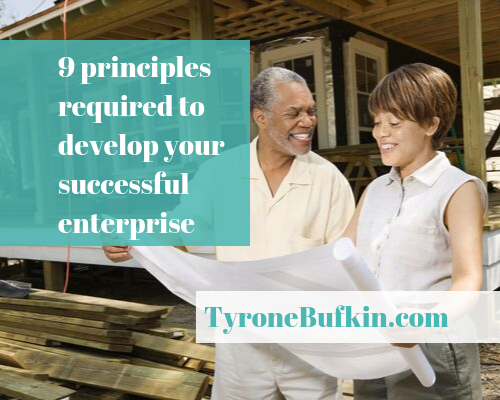

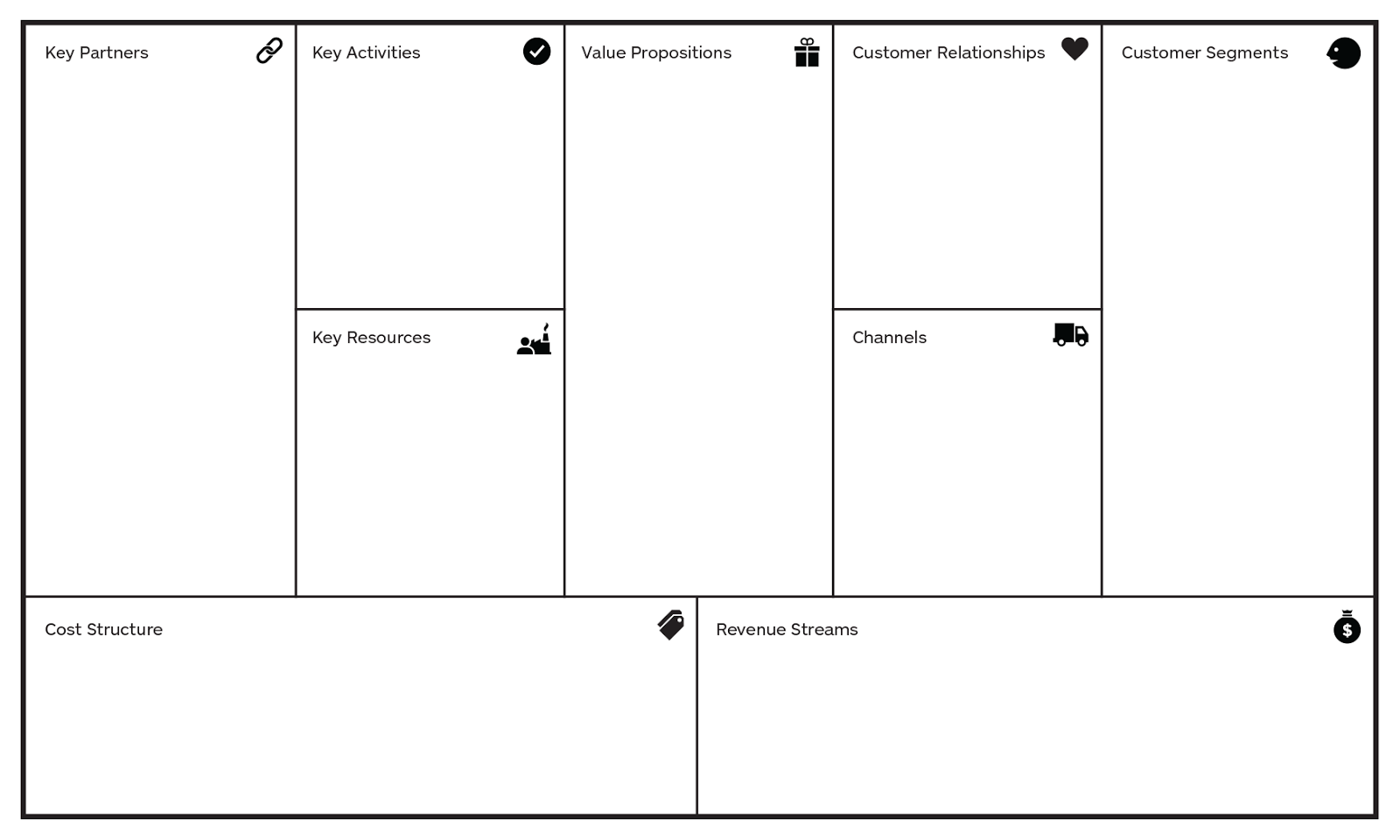



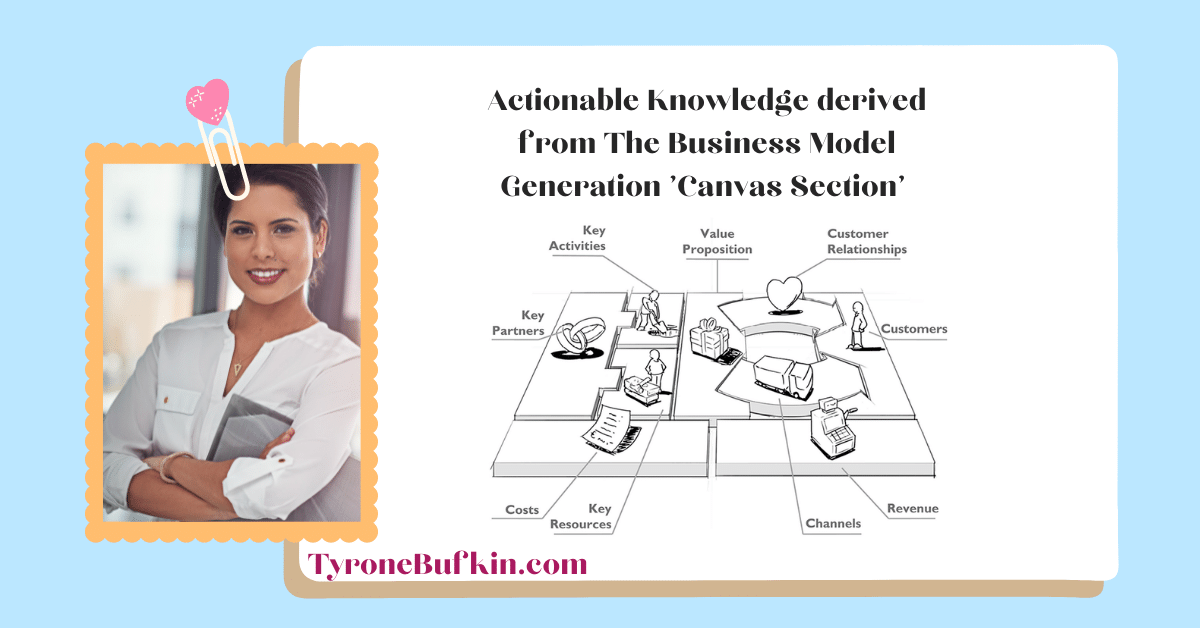
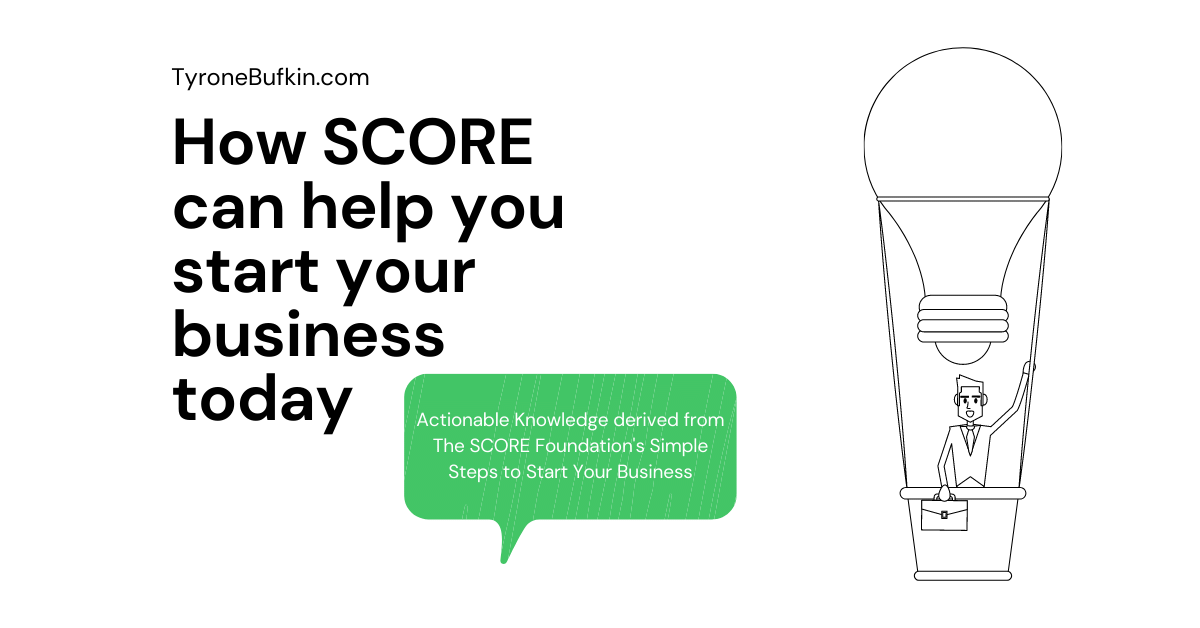
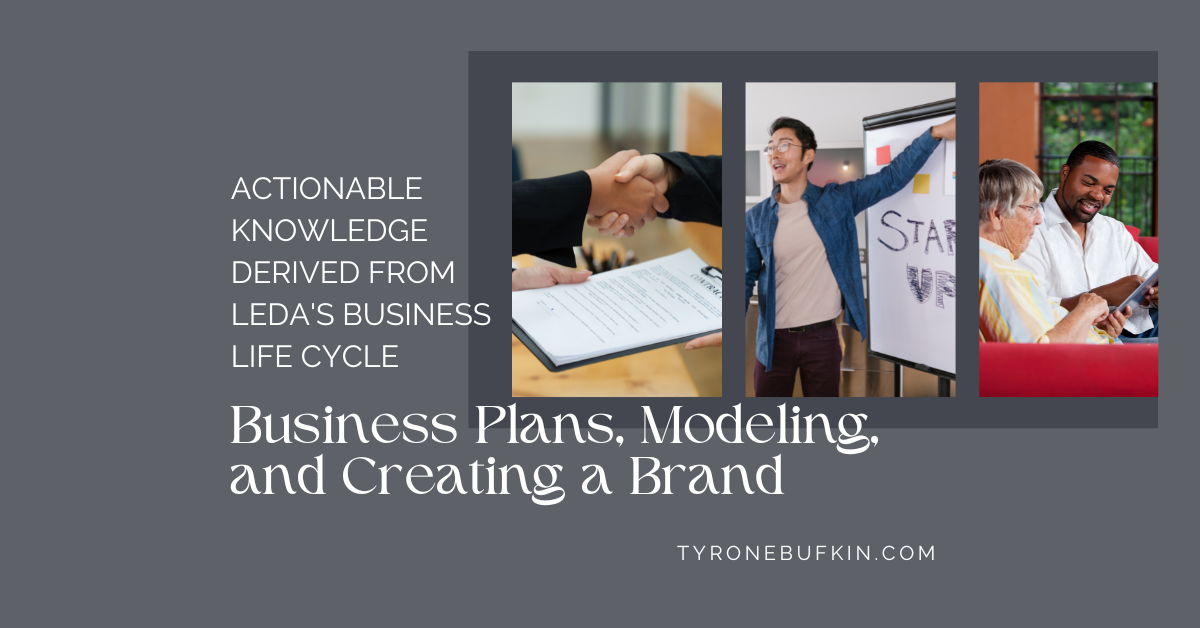
One thought on “9 principles required to develop your successful enterprise”
Comments are closed.